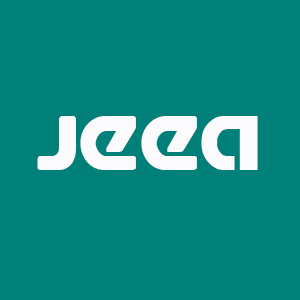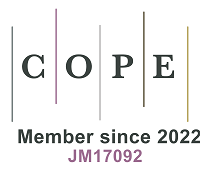REFERENCES
1. United Nations. Population. Available from: https://www.un.org/en/global-issues/population#:~:text=Our%20growing%20population,and%202%20billion%20since%201998 [Last accessed on 24 Jan 2024].
2. Shumo M, Osuga IM, Khamis FM, et al. The nutritive value of black soldier fly larvae reared on common organic waste streams in Kenya. Sci Rep 2019;9:10110.
3. Halweil B. Meat production continues to rise. Available from: https://www.weltagrarbericht.de/fileadmin/files/weltagrarbericht/worldwatch_meat_2008.pdf [Last accessed on 24 Jan 2024].
4. Barona E, Ramankutty N, Hyman G, Coomes OT. The role of pasture and soybean in deforestation of the Brazilian Amazon. Environ Res Lett 2010;5:024002.
5. Dai P, Luan S, Sui J, et al. Insight into genetic potential for growth and survival of the Pacific white shrimp (Litopenaeus vannamei) in the context of low-protein and low-fishmeal diet use. Aquaculture Research 2022;53:3337-45.
6. van Huis A, Oonincx DGAB. The environmental sustainability of insects as food and feed. A review. Agron Sustain Dev 2017;37:43.
7. Shah AA, Totakul P, Matra M, Cherdthong A, Hanboonsong Y, Wanapat M. Nutritional composition of various insects and potential uses as alternative protein sources in animal diets. Anim Biosci 2022;35:317-31.
8. De Smet J, Wynants E, Cos P, Van Campenhout L. Microbial community dynamics during rearing of black soldier fly larvae (hermetia illucens) and impact on exploitation potential. Appl Environ Microbiol 2018;84:e02722-17.
9. Lievens S, Poma G, De Smet J, Van Campenhout L, Covaci A, Van Der Borght M. Chemical safety of black soldier fly larvae (hermetia illucens), knowledge gaps and recommendations for future research: a critical review. JIFF 2021;7:383-96.
10. Purschke B, Scheibelberger R, Axmann S, Adler A, Jäger H. Impact of substrate contamination with mycotoxins, heavy metals and pesticides on the growth performance and composition of black soldier fly larvae (hermetia illucens) for use in the feed and food value chain. Food Addit Contam Part A Chem Anal Control Expo Risk Assess 2017;34:1410-20.
11. Barragan-fonseca K, Dicke M, van Loon J. Nutritional value of the black soldier fly (hermetia illucens L.) and its suitability as animal feed - a review. JIFF 2017;3:105-20.
12. Miranda CD, Cammack JA, Tomberlin JK. Life-history traits of the black soldier fly, hermetia illucens (L.) (diptera: stratiomyidae), reared on three manure types. Animals 2019;9:281.
13. Spranghers T, Ottoboni M, Klootwijk C, et al. Nutritional composition of black soldier fly (hermetia illucens) prepupae reared on different organic waste substrates. J Sci Food Agric 2017;97:2594-600.
14. O'Connor J, Mickan BS, Siddique KHM, Rinklebe J, Kirkham MB, Bolan NS. Physical, chemical, and microbial contaminants in food waste management for soil application: A review. Environ Pollut 2022;300:118860.
15. Vandeweyer D, De Smet J, Van Looveren N, Van Campenhout L. Biological contaminants in insects as food and feed. JIFF 2021;7:807-22.
16. Lievens S, Slegers T, Mees MA, et al. A simple, rapid and accurate method for the sample preparation and quantification of meso- and microplastics in food and food waste streams. Environ Pollut 2022;307:119511.
17. Mercogliano R, Avio CG, Regoli F, Anastasio A, Colavita G, Santonicola S. Occurrence of microplastics in commercial seafood under the perspective of the human food chain. a review. J Agric Food Chem 2020;68:5296-301.
18. Oliveri Conti G, Ferrante M, Banni M, et al. Micro- and nano-plastics in edible fruit and vegetables. The first diet risks assessment for the general population. Environ Res 2020;187:109677.
19. United States Environmental Protection Agency. Sustainable materials management: non-hazardous materials and waste management hierarchy. Available from: https://www.epa.gov/smm/sustainable-materials-management-non-hazardous-materials-and-waste-management-hierarchy [Last accessed on 24 Jan 2024].
20. Directive 2008/122/EC of the European parliament and of the council. In: Radley-gardner O, Beale H, Zimmermann R, editors. Fundamental Texts On European Private Law. Hart Publishing; 2016.p. 593-605.
21. Marsh K, Bugusu B. Food packaging--roles, materials, and environmental issues. J Food Sci 2007;72:R39-55.
22. Navarro R, Pérez Perrino M, Gómez Tardajos M, Reinecke H. Phthalate plasticizers covalently bound to PVC: plasticization with suppressed migration. Macromolecules 2010;43:2377-81.
23. Chung BY, Choi SM, Roh TH, et al. Risk assessment of phthalates in pharmaceuticals. J Toxicol Environ Health A 2019;82:351-60.
24. Forner-Piquer I, Maradonna F, Gioacchini G, et al. Dose-specific effects of di-isononyl phthalate on the endocannabinoid system and on liver of female zebrafish. Endocrinology 2017;158:3462-76.
25. Kamrin MA. Phthalate risks, phthalate regulation, and public health: a review. J Toxicol Environ Health B Crit Rev 2009;12:157-74.
26. Qadeer A, Kirsten KL, Ajmal Z, Jiang X, Zhao X. Alternative plasticizers as emerging global environmental and health threat: another regrettable substitution? Environ Sci Technol 2022;56:1482-8.
27. Cho S, Kim C, Kim M, Chung H. Effects of microplastics and salinity on food waste processing by black soldier fly (hermetia illucens) larvae. J Ecology Environ 2020;44:7.
28. Lievens S, Poma G, Frooninckx L, et al. Mutual Influence between polyvinyl chloride (micro)plastics and black soldier fly larvae (hermetia illucens L.). Sustainability 2022;14:12109.
29. Lievens S, Vervoort E, Bruno D, et al. Ingestion and excretion dynamics of microplastics by black soldier fly larvae and correlation with mouth opening size. Sci Rep 2023;13:4341.
30. Romano N, Fischer H. Microplastics affected black soldier fly (hermetia illucens) pupation and short chain fatty acids. J Applied Entomology 2021;145:731-6.
31. Caldwell J, Taladriz-Blanco P, Lehner R, et al. The micro-, submicron-, and nanoplastic hunt: a review of detection methods for plastic particles. Chemosphere 2022;293:133514.
32. La Nasa J, Biale G, Fabbri D, Modugno F. A review on challenges and developments of analytical pyrolysis and other thermoanalytical techniques for the quali-quantitative determination of microplastics. J Anal Appl Pyrolysis 2020;149:104841.
33. Malarvannan G, Onghena M, Verstraete S, et al. Phthalate and alternative plasticizers in indwelling medical devices in pediatric intensive care units. J Hazard Mater 2019;363:64-72.
34. Christia C, Poma G, Caballero-Casero N, Covaci A. Suspect screening analysis in house dust from Belgium using high resolution mass spectrometry; prioritization list and newly identified chemicals. Chemosphere 2021;263:127817.
35. Broeckx L, Frooninckx L, Slegers L, et al. Growth of black soldier fly larvae reared on organic side-streams. Sustainability 2021;13:12953.
36. Lievens S, Vervoort E, Poma G, Covaci A, Van Der Borght M. A production and fractionation protocol for polyvinyl chloride microplastics. Methods Protoc 2023;6:15.
37. Christia C, Tang B, Yin SS, et al. Simultaneous determination of legacy and emerging organophosphorus flame retardants and plasticizers in indoor dust using liquid and gas chromatography-tandem mass spectrometry: method development, validation, and application. Anal Bioanal Chem 2019;411:7015-25.
38. Poma G, Yin S, Tang B, Fujii Y, Cuykx M, Covaci A. Occurrence of selected organic contaminants in edible insects and assessment of their chemical safety. Environ Health Perspect 2019;127:127009.
39. Bastiaensen M, Malarvannan G, Gys C, Ait Bamai Y, Araki A, Covaci A. Between- and within-individual variability of urinary phthalate and alternative plasticizer metabolites in spot, morning void and 24-h pooled urine samples. Environ Res 2020;191:110248.
40. European Medicines Agency. Guideline on bioanalytical method validation. Available from: https://www.ema.europa.eu/en/bioanalytical-method-validation-scientific-guideline [Last accessed on 24 Jan 2024].
41. Schymanski EL, Jeon J, Gulde R, et al. Identifying small molecules via high resolution mass spectrometry: communicating confidence. Environ Sci Technol 2014;48:2097-8.
42. Lakeev SN, Maydanova IO, Mullakhmetov RF, Davydova OV. Ester plasticizers for polyvinyl chloride. Russ J Appl Chem 2016;89:1-15.
43. Grosu E. Applications of polyvinylchloride (PVC)/thermoplastic nano-, micro- and macroblends. In: P. M. V, Darie-nita RN, editors. Polyvinylchloride-based Blends. Cham: Springer International Publishing; 2022. pp. 75-89.
44. Bui TT, Giovanoulis G, Cousins AP, Magnér J, Cousins IT, de Wit CA. Human exposure, hazard and risk of alternative plasticizers to phthalate esters. Sci Total Environ 2016;541:451-67.
45. Gadaleta D, Vuković K, Toma C, et al. SAR and QSAR modeling of a large collection of LD50 rat acute oral toxicity data. J Cheminform 2019;11:58.
46. OECD. Sids initial assessment profile. Available from: https://hpvchemicals.oecd.org/ui/handler.axd?id=62533f49-988b-48d3-865f-2af5abb24b33 [Last accessed on 24 Jan 2024].
47. Wirnitzer U, Rickenbacher U, Katerkamp A, Schachtrupp A. Systemic toxicity of di-2-ethylhexyl terephthalate (DEHT) in rodents following four weeks of intravenous exposure. Toxicol Lett 2011;205:8-14.
48. Crespo JE, Balart R, Sanchez L, López J. Substitution of di(2-ethylhexyl) phthalate by di(isononyl) cyclohexane-1,2-dicarboxylate as a plasticizer for industrial vinyl plastisol formulations. J Appl Polym Sci 2007;104:1215-20.
49. Hines CJ, Hopf NB, Deddens JA, Silva MJ, Calafat AM. Occupational exposure to diisononyl phthalate (DiNP) in polyvinyl chloride processing operations. Int Arch Occup Environ Health 2012;85:317-25.
50. Godoi FGA, Forner-Piquer I, Randazzo B, et al. Effects of Di-isononyl phthalate (DiNP) on follicular atresia in zebrafish ovary. Front Endocrinol 2021;12:677853.
51. Cumming H, Rücker C. Octanol-water partition coefficient measurement by a simple 1H NMR method. ACS Omega 2017;2:6244-9.
52. Henkel C, Hüffer T, Hofmann T. Polyvinyl chloride microplastics leach phthalates into the aquatic environment over decades. Environ Sci Technol 2022;56:14507-16.
53. National Center for Biotechnology Information. Diisononyl phthalate. Available from: https://pubchem.ncbi.nlm.nih.gov/compound/Diisononyl-phthalate [Last accessed on 24 Jan 2023].
54. National Center for Biotechnology. Bis(2-ethylhexyl) terephthalate. Available from: https://pubchem.ncbi.nlm.nih.gov/compound/Bis_2-ethylhexyl_-terephthalate [Last accessed on 24 Jan 2023].
55. European Commission. Commission Regulation (EU) No 10/2011 of 14 January 2011 on plastic materials and articles intended to come into contact with food text with EEA relevance. Available from: http://data.europa.eu/eli/reg/2011/10/oj [Last accessed on 24 Jan 2023].
56. Poma G, Fujii Y, Lievens S, et al. Occurrence, patterns, and sources of hazardous organic chemicals in edible insects and insect-based food from the Japanese market. Food Chem Toxicol 2021;154:112311.
57. Zhang Q, Hao LC, Hong Y. Exposure evaluation of diisononyl phthalate in the adults of Drosophila melanogaster: Potential risks in fertility, lifespan, behavior, and modes of action. Comp Biochem Physiol C Toxicol Pharmacol 2020;238:108847.
58. Zhang Q, Hao L, Hong Y. Detrimental effects induced by diisononyl phthalate on development and behavior of Drosophila larva and potential mechanisms. Comp Biochem Physiol C Toxicol Pharmacol 2021;243:108967.
59. Bulak P, Polakowski C, Nowak K, Waśko A, Wiącek D, Bieganowski A. Hermetia illucens as a new and promising species for use in entomoremediation. Sci Total Environ 2018;633:912-9.
60. Gao Q, Wang X, Wang W, Lei C, Zhu F. Influences of chromium and cadmium on the development of black soldier fly larvae. Environ Sci Pollut Res Int 2017;24:8637-44.
61. Saravanabhavan G, Murray J. Human biological monitoring of diisononyl phthalate and diisodecyl phthalate: a review. J Environ Public Health 2012;2012:810501.
62. Silva MJ, Reidy JA, Preau JL Jr, Needham LL, Calafat AM. Oxidative metabolites of diisononyl phthalate as biomarkers for human exposure assessment. Environ Health Perspect 2006;114:1158-61.
63. Gold M, Egger J, Scheidegger A, et al. Estimating black soldier fly larvae biowaste conversion performance by simulation of midgut digestion. Waste Manag 2020;112:40-51.
64. Kubwabo C, Rasmussen PE, Fan X, et al. Analysis of selected phthalates in Canadian indoor dust collected using household vacuum and standardized sampling techniques. Indoor Air 2013;23:506-14.
65. Luongo G, Östman C. Organophosphate and phthalate esters in settled dust from apartment buildings in Stockholm. Indoor Air 2016;26:414-25.
66. Stajnko A, Runkel AA, Kosjek T, et al. Assessment of susceptibility to phthalate and DINCH exposure through CYP and UGT single nucleotide polymorphisms. Environ Int 2022;159:107046.
67. Meijer N, Stoopen G, van der Fels-Klerx HJ, van Loon JJA, Carney J, Bosch G. Aflatoxin B1 conversion by black soldier fly (hermetia illucens) larval enzyme extracts. Toxins 2019;11:532.







